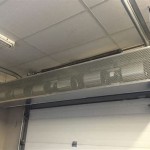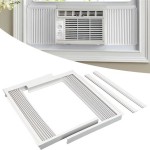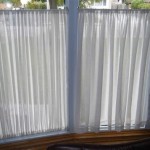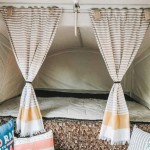Thermal Curtains: An Effective Solution for Heat Management
Thermal curtains, also known as insulated curtains, are window treatments specifically designed to minimize heat transfer between the interior of a building and the exterior environment. They function as a barrier, reducing the amount of heat that enters a room during warmer months and the amount that escapes during cooler months. This controlled heat transfer leads to improved energy efficiency, reduced energy bills, and a more comfortable indoor environment.
The effectiveness of thermal curtains stems from their multi-layered construction, which typically involves a face fabric, an inner lining, and potentially an additional layer of insulation. These layers work together to block sunlight, absorb heat, and prevent air movement. The specific materials used and the construction techniques employed influence the overall performance and thermal resistance of the curtain.
The primary function of thermal curtains is to regulate temperature. By blocking solar heat gain in the summer, they can significantly reduce the need for air conditioning. Conversely, during the winter, they help retain heat within the room, lessening the demand on heating systems. This ability to moderate indoor temperature makes thermal curtains a valuable addition to any home or building, contributing to both energy savings and enhanced comfort.
Understanding the Mechanics of Heat Transfer
To fully appreciate the benefits of thermal curtains, it is crucial to understand the mechanisms of heat transfer: conduction, convection, and radiation. Conduction involves the transfer of heat through a material, such as a windowpane. Convection involves the transfer of heat through the movement of fluids (air or liquids). Radiation involves the transfer of heat through electromagnetic waves, such as sunlight.
Windows are often a primary source of heat transfer in buildings. During the summer, sunlight radiates through the glass, warming the interior surfaces. This heat is then conducted through the glass and convected into the room air. In the winter, heat from inside the room is conducted through the glass and radiated to the colder exterior. Air leaks around windows also contribute to convective heat loss or gain.
Thermal curtains address all three modes of heat transfer. The opaque fabric blocks solar radiation, preventing it from entering the room. The multiple layers of material create an insulating barrier that reduces conductive heat transfer through the window. Additionally, a tight seal between the curtain and the window frame minimizes convective heat loss or gain by preventing air movement.
Key Features and Materials Contributing to Thermal Performance
The effectiveness of thermal curtains depends on several key features and the materials used in their construction. These features include the fabric type, the lining material, the number of layers, and the overall design of the curtain.
The face fabric of a thermal curtain is typically a tightly woven material that is resistant to sunlight and fading. Common choices include polyester, cotton blends, and heavier fabrics like velvet or suede. Darker colors generally offer better light blocking properties, which translates to improved heat reduction. However, darker colors can also absorb more heat, potentially transferring some of it into the room. Lighter colors reflect more sunlight, which can be advantageous in some situations.
The lining material is a critical component of thermal curtains. It is often made of acrylic suede, flannel, or a specialized thermal lining that incorporates a layer of foam or a metallic film. The lining serves to add insulation and block light. Metallic films are particularly effective at reflecting radiant heat, while foam layers provide additional insulation against conductive heat transfer.
The number of layers in a thermal curtain is directly related to its insulating properties. Curtains with multiple layers of tightly woven fabric and insulating linings offer the best thermal performance. Some thermal curtains also include an additional vapor barrier to prevent condensation from forming on the window.
The design of the curtain also plays a role in its effectiveness. Curtains that are installed close to the window frame and extend beyond the window opening on all sides provide a better seal and minimize air leakage. Features like grommets or rings at the top of the curtain can create a gap between the curtain and the wall, allowing for some air circulation and potentially reducing thermal performance. Curtains with pleats or folds can also trap air and provide additional insulation.
Factors to Consider When Selecting Thermal Curtains
Choosing the right thermal curtains involves considering various factors, including the climate, the orientation of the windows, the desired level of light control, and the overall aesthetic of the room. Careful consideration of these factors will ensure that the selected curtains provide the desired level of thermal performance and contribute to a comfortable and energy-efficient living space.
In climates with hot summers and cold winters, it is essential to choose thermal curtains with a high insulation value to both block solar heat gain in the summer and retain heat in the winter. In milder climates, the required level of insulation may be less critical. The orientation of the windows also influences the selection process. Windows facing south or west receive the most direct sunlight and may benefit from heavier, more insulated curtains. Windows facing north or east receive less direct sunlight and may only require lighter thermal curtains.
The desired level of light control is another important consideration. Some individuals prefer complete blackout conditions, while others prefer to allow some natural light to filter through. Thermal curtains are available in a range of opacities, from sheer to blackout. Blackout curtains are ideal for bedrooms or media rooms where complete darkness is desired. Sheer or semi-sheer thermal curtains can provide some level of insulation while still allowing natural light to enter the room.
The overall aesthetic of the room should also be considered when selecting thermal curtains. Thermal curtains are available in a wide variety of colors, patterns, and styles to complement any décor. It is important to choose curtains that not only provide the desired level of thermal performance but also enhance the overall look and feel of the room.
Furthermore, the proper installation of thermal curtains is crucial for maximizing their effectiveness. Curtains should be installed as close to the window frame as possible and should extend beyond the window opening on all sides to create a tight seal. Using a curtain rod that extends several inches beyond the window frame can help to minimize air leakage. Additionally, consider using a valance or cornice at the top of the curtain to further prevent air movement. Regularly cleaning the curtains can also help to maintain their thermal performance by removing dust and debris that can reduce their insulating properties.
The selection of thermal curtains represents a multifaceted process that takes into account climate conditions, window orientation, light control preferences, and aesthetic considerations. Selecting the right curtains and ensuring their proper installation are crucial steps toward achieving optimal energy efficiency and indoor comfort.

Answered Do Thermal Curtains Work Sealed

The 7 Best Thermal Curtains In 2024 Curtain Reviews

The Best Curtains To Keep Heat Out Year Round Shade

Insulated Curtains Reduce Your Heating And Electric Costs With Energy Efficient Machine Washable Grommet Top

The Best Thermal Curtains To Keep Your Home Warm

Do Thermal Curtains Keep Heat Out Time Curtain

The 7 Best Thermal Curtains In 2024 Curtain Reviews

Sun Zero Blackout Duran Thermal Insulated Grommet Curtain Panel

Insulated Thermal Curtains Garage S And

Do Blackout Curtains Keep Heat Out Marathon Be








